Ahmad Tanvir
HFT-ONLSTM: Hierarchical and Fine-Tuning Multi-label Text Classification
Apr 18, 2022
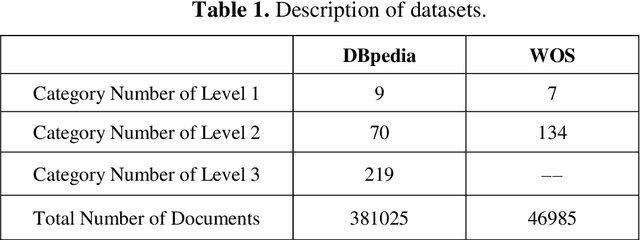
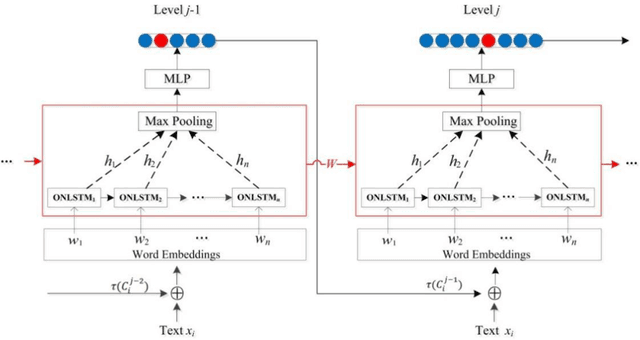
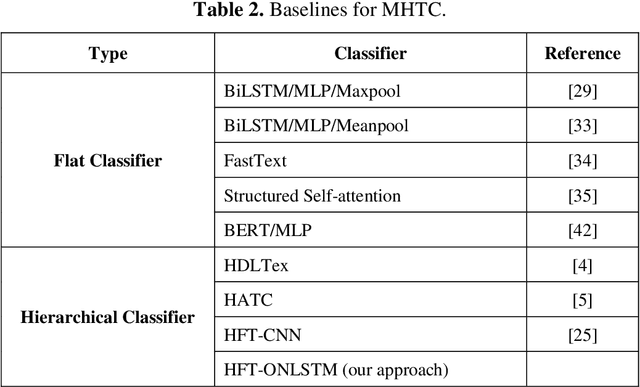
Abstract:Many important classification problems in the real-world consist of a large number of closely related categories in a hierarchical structure or taxonomy. Hierarchical multi-label text classification (HMTC) with higher accuracy over large sets of closely related categories organized in a hierarchy or taxonomy has become a challenging problem. In this paper, we present a hierarchical and fine-tuning approach based on the Ordered Neural LSTM neural network, abbreviated as HFT-ONLSTM, for more accurate level-by-level HMTC. First, we present a novel approach to learning the joint embeddings based on parent category labels and textual data for accurately capturing the joint features of both category labels and texts. Second, a fine tuning technique is adopted for training parameters such that the text classification results in the upper level should contribute to the classification in the lower one. At last, the comprehensive analysis is made based on extensive experiments in comparison with the state-of-the-art hierarchical and flat multi-label text classification approaches over two benchmark datasets, and the experimental results show that our HFT-ONLSTM approach outperforms these approaches, in particular reducing computational costs while achieving superior performance.
An Ensemble Learning Based Approach to Multi-label Power Text Classification for Fault-type Recognition
Apr 13, 2022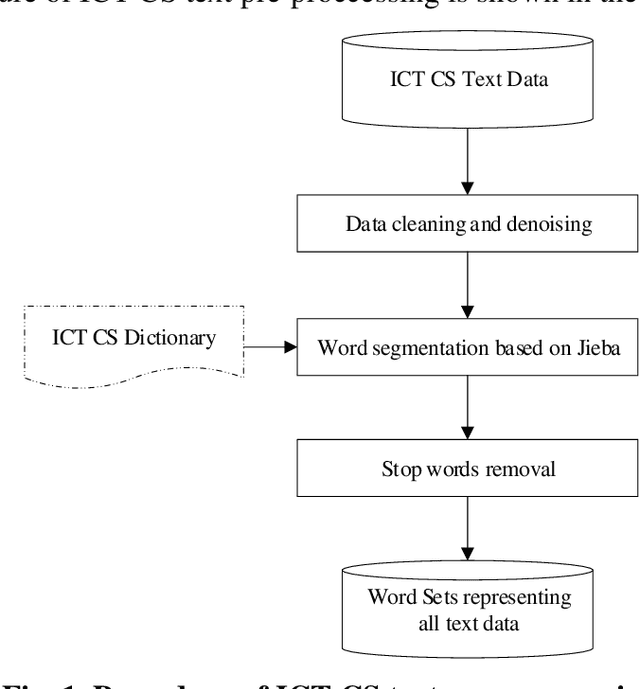
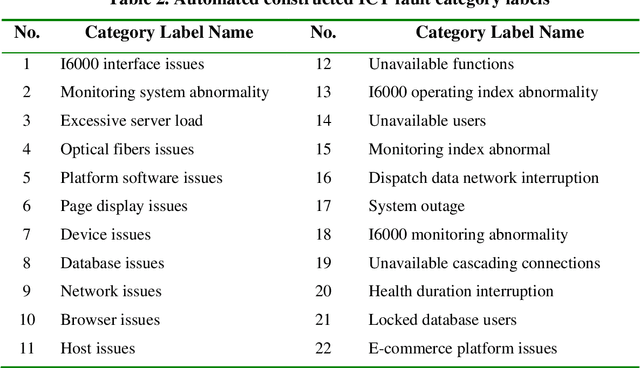


Abstract:With the rapid development of ICT Custom Services (ICT CS) in power industries, the deployed power ICT CS systems mainly rely on the experience of customer service staff for fault type recognition, questioning, and answering, which makes it difficult and inefficient to precisely resolve the problems issued by users. To resolve this problem, in this paper, firstly, a multi-label fault text classification ensemble approach called BR-GBDT is proposed by combining Binary Relevance and Gradient Boosting Decision Tree for assisted fault type diagnosis and improving the accuracy of fault type recognition. Second, for the problem that there is lack of the training set for power ICT multi-label text classification, an automatic approach is presented to construct the training set from the historical fault text data stored in power ICT CS systems. The extensive experiments were made based on the power ICT CS training set and some general-purpose benchmark training datasets. The experiment results show that our approach outperforms the well known ensemble learning based approaches BR+LR and ML-KNN for fault text classification, efficiently handling the multi-label classification of ICT custom service text data for fault type recognition.
 Add to Chrome
Add to Chrome Add to Firefox
Add to Firefox Add to Edge
Add to Edge